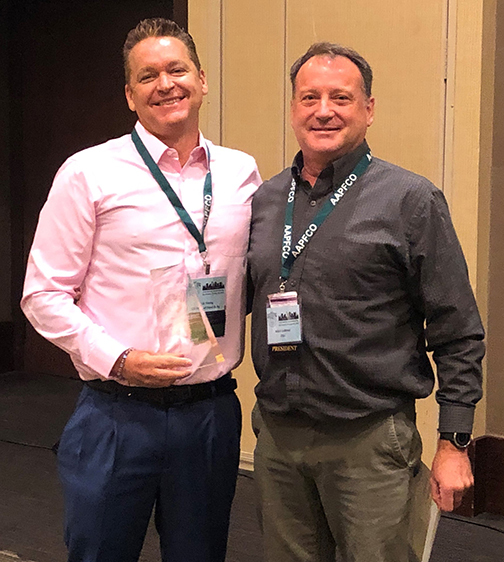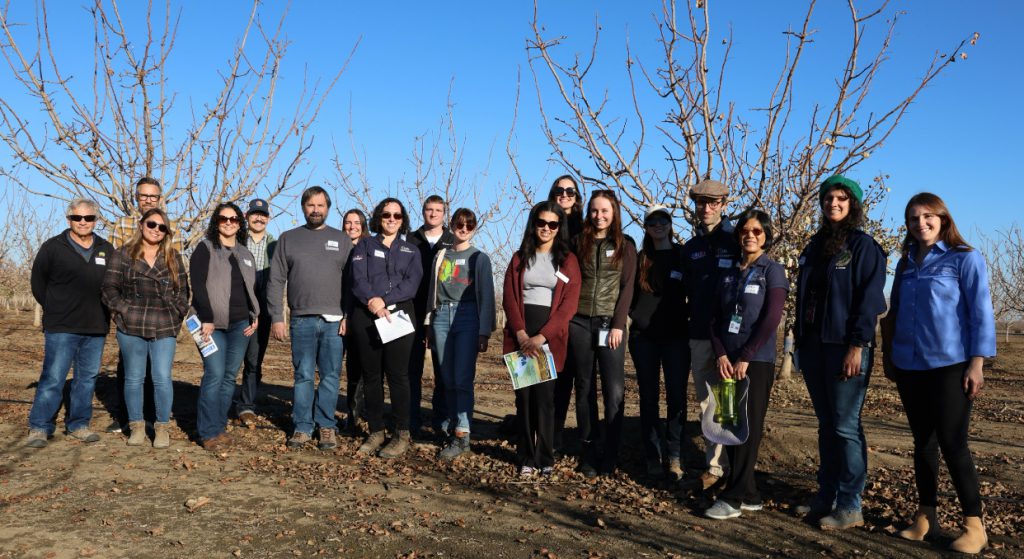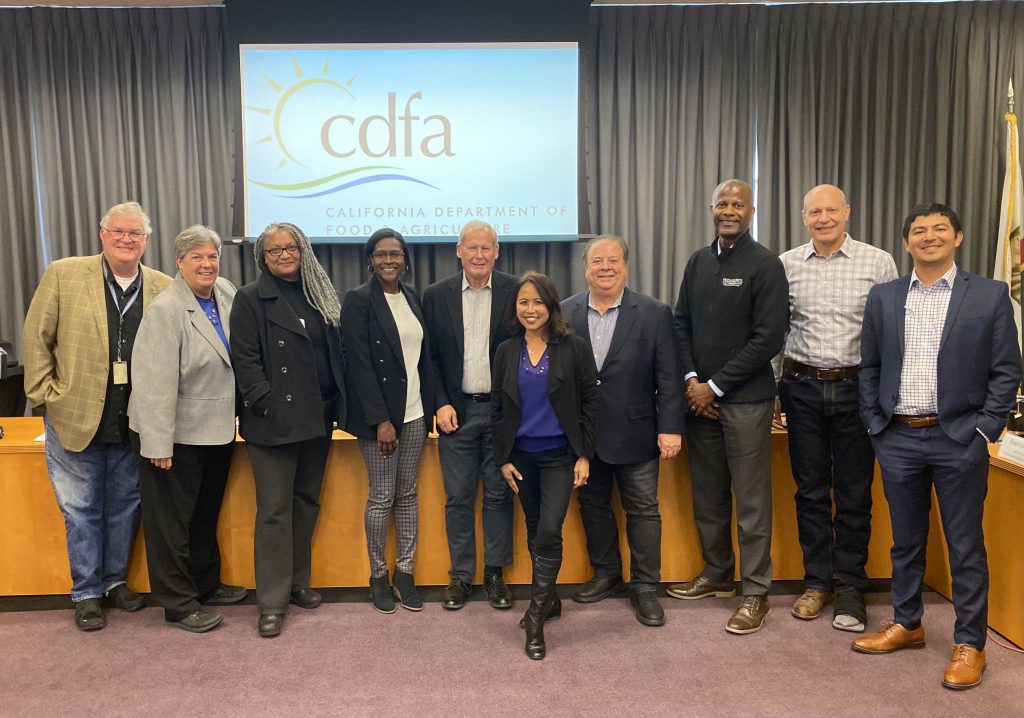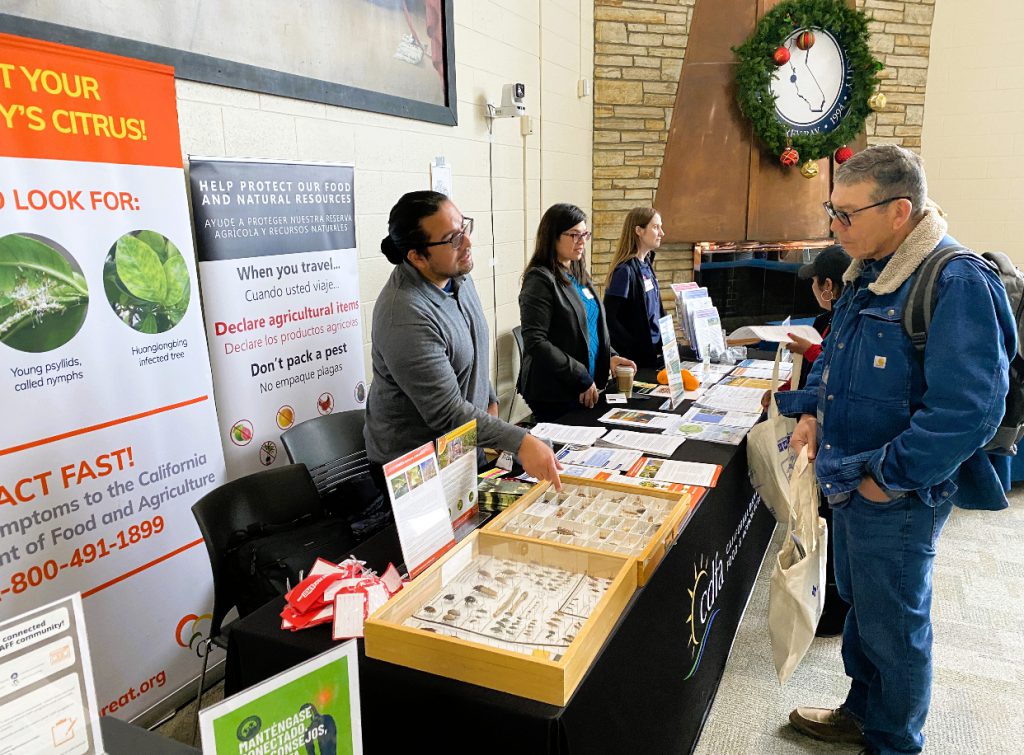CDFA secretary Karen Ross recently paid visits to agency departments to wish employees happy holidays and thank them for their service to the people of California. She also shared these thoughts.

CDFA secretary Karen Ross recently paid visits to agency departments to wish employees happy holidays and thank them for their service to the people of California. She also shared these thoughts.
News Release from Governor Newsom
What you need to know: Following the spread of Bird Flu in sixteen states, including in California and outside the Central Valley, Governor Newsom proclaimed a State of Emergency today to further enhance the state’s preparedness and accelerate the ongoing cross-agency response efforts.
——-
Governor Gavin Newsom today proclaimed a State of Emergency to streamline and expedite the state’s response to Avian influenza A (H5N1), commonly known as “Bird Flu.” This action comes as cases were detected in dairy cows on farms in Southern California, signaling the need to further expand monitoring and build on the coordinated statewide approach to contain and mitigate the spread of the virus. The virus has spread in 16 states among dairy cattle, following its first confirmed detection in Texas and Kansas in March 2024.
To date, no person-to-person spread of Bird Flu has been detected in California and nearly all infected individuals had exposure to infected cattle. California has already established the largest testing and monitoring system in the nation to respond to the outbreak.
This emergency proclamation will provide state and local agencies with additional flexibility around staffing, contracting, and other rules to support California’s evolving response.
Governor Gavin Newsom
California has mobilized a comprehensive cross-agency response to Bird Flu in dairy cattle and poultry farms to minimize farm worker exposures, reduce raw dairy product contamination, and mitigate the spread of the virus. The state has enlisted local, state, and federal government technical and operational expertise to support all facets of the response; worked to educate the public, health professionals, employers, and workers on prevention and control measures to reduce the risk of exposure to Bird Flu; provided comprehensive information for employers and workers on personal protective equipment (PPE) requirements; and distributed millions of pieces of PPE to high-risk workers at dairy farms.
Through coordinated public awareness efforts between the California Department of Public Health (CDPH), the California Department of Food and Agriculture (CDFA), California Office of Emergency Services (CalOES), and other agencies, the state is leading a cross-agency response that includes timely public updates, multilingual outreach to dairy and poultry workers, targeted social media efforts to promote preventive practices, online and printed resources for the public, and media interviews to keep Californians informed. Additionally, the state is ensuring that agriculture workers have access to additional doses of seasonal flu vaccine from the Centers for Disease Control and Prevention (CDC) to reduce concurrent flu risks.
Officials have also been working in close collaboration with the Centers for Disease Control, the U.S. Food and Drug Administration, the U.S. Department of Agriculture, and local health and agricultural officials, as part of a whole-of-government effort to coordinate, implement, and ensure timely surveillance and investigation of potential cases of Bird Flu.
Bird Flu was first detected in the United States in the wild bird population in South Carolina in January 2022, and in the wild bird population in California in July 2022. On March 25, 2024, an outbreak of Bird Flu in dairy cows was first reported in Texas and Kansas, and CDFA took immediate action to monitor for Bird Flu infections in California herds. Since then, there have been 61 total reported confirmed cases of Bird Flu infection in humans across seven states, including 34 reported human cases in California.
On August 30, 2024, following its detection in 13 other states, Bird Flu was confirmed in a dairy cow in Central California, and the California Department of Public Health immediately activated its Medical Health Coordination Center.
The U.S. Department of Agriculture’s (USDA) Agricultural Marketing Service (AMS) today announced it has partnered with the California Department of Food and Agriculture (CDFA) to award $21.5 million for 117 projects through the Resilient Food Systems Infrastructure Program (RFSI) to build resilience across the middle of the supply chain and strengthen local and regional food systems.
“Projects funded through the Resilient Food Systems Infrastructure program are building strength and resilience in California’s food system, diversifying agricultural markets, creating new revenue streams for small and mid-sized producers, and providing economic opportunities for local communities,” said USDA Agricultural Marketing Service Administrator Bruce Summers. “USDA is grateful for California’s support strengthening local and regional agricultural supply chains.”
Through this program, CDFA will fund 117 projects, including seven Infrastructure Grants and 110 Equipment Grants to support middle of the supply chain infrastructure. CDFA is still reviewing 11 additional projects – nine Infrastructure Grants and two Equipment Grants totaling $9.0 million – which will be awarded in the coming months, bringing California’s total awarded to $30.5 million.
“This is an innovative, much-needed program from the USDA, and we are so appreciative of their vision in bringing it forward,” said CDFA Secretary Karen Ross. “This is an investment to advance the California State Board of Food and Agriculture’s strategic goals for Ag Vision – to foster climate-smart, resilient and local food systems by addressing gaps in the supply chain and to provide more opportunities for California’s small farms while contributing to healthy, local communities with expanded access to the bounty of flavorful, nutritious food we grow in our state.”
Examples of Funded Projects:
This awarded funding is part of the $420 million available through the Resilient Food Systems Infrastructure grant program to build capacity within the middle of the supply chain and support local and regional producers. It is funded by President Biden’s American Rescue Plan. Through this program, AMS has entered into cooperative agreements with state agencies, commissions, or departments responsible for agriculture, commercial food processing, seafood, or food system and distribution activities or commerce activities in states or U.S. territories.
For more information, visit the AMS Resilient Food Systems Infrastructure webpage. The status of each state and territory’s RFSI program is available on the program’s State Grant Webpage.

CDFA Fertilizing Materials Inspection Program Manager Nick Young was recently awarded the Presidential Distinguished Service Award by the Association of American Plant Food Control Officials (AAPFCO) — the first person from California to receive the award in the organization’s 77-year history.
Young received the award for providing outstanding service to the association over the past 12 years, including a stint as president in 2019. During this time, Young was instrumental in influencing perceptions about biostimulants, materials that improve nutrition profiles for plants. An example is seaweed extract derived from algae, which can stimulate root growth, enhance stress tolerance, and improve nutrient uptake. Young’s commitment to a uniform understanding of biostimulants among state regulators led to an AAPFCO initiative to formally recognize them, which is part of a process now underway to establish a productive regulatory framework nationally.
“For the benefit of the fertilizing industry selling plant biostimulant products, consumers purchasing them and inspectors regulating them, Nick’s determination helped all involved have a shared definition of what the term means,” said Inspection Services Division Director Natalie Krout-Greenberg. “This award signifies CDFA’s efforts toward innovation, national uniformity and standardization for the benefit of a shared understanding, as well as Nick’s professionalism and perseverance in helping achieve that.”
CDFA staff members recently took part in the 2024 California State Employees Food Drive by volunteering at the Sacramento Food Bank and Family Services.
The CDFA team separated bulk elbow macaroni into one-pound bags, vacuum-sealed them, then applied stickers to the packages and boxed them. In total, the team prepared 1,456 bags of macaroni.
Participating CDFA staff members were from the Executive Office and the Inspection Services Division’s Center for Analytical Chemistry, as well as the division’s Feed, Fertilizer and Livestock Drugs Regulatory Services Branch and Inspection and Compliance Branch.
CDFA leads the annual employees food drive, raising food, funds, and awareness about hunger issues in California. Everybody is encouraged to visit https://www.fooddrive.ca.gov/donate/ to find a food bank in your county to donate food or volunteer hours.
CDFA’s Antimicrobial Use and Stewardship Program, created by legislation in 2017, provides leadership in animal health circles for innovative approaches to antibiotic resistance and responsible use of medications.
The program looks closely at antibiotic sales, surveys producers about on-farm practices, and analyzes veterinary feed directives. These activities improve the understanding of the use of antibiotic drugs in livestock and guide the development of relevant materials to promote stewardship and
judicious use.
In 2023, the program collected and reviewed 631 veterinary feed directives, and that is part of a body of work that includes engagement of 112 different farms for outreach purposes, as well as 391 inspections of retailers for compliance with California laws and regulations for antibiotic sales and use.
The program is also active on the research side, with animal management strategies including an aquaculture study on dietary models for white sturgeon to help with disease management and stewardship efforts.
You can read more about the Antimicrobial Use and Stewardship Program in its annual report.
In honor of Healthy Soils Week (December 2-6), CDFA joined legislators, their staff members, and stakeholders for a tour of farms in Yolo County to see greenhouse gas-reducing healthy soil practices in action. Farmers who have received healthy soils grants from CDFA’s Office of Environmental Farming and Innovation showed successful implementation of mulching and cover crop practices on adjacent farms and discussed their importance in improving soil structure, fertility, and water retention. The tour also included compost application and a well-established, low-maintenance hedgerow line — a thriving habitat for pollinator species.
Each farmer emphasized the critical support provided by the Healthy Soils Program, and how the funding enabled them to adopt these practices.
Tour attendees included representatives from the Community Alliance with Family Farmers (CAFF), the California Climate and Agriculture Network (CalCAN), University of California Agriculture and Natural Resources (UC ANR), the offices of Assemblymembers Cecilia Aguiar-Curry and Jacqui Irwin, and the Senate Committee on Agriculture. The collaboration of these farmers, policymakers and climate-smart agriculture advocates continues to make the Healthy Soils Program a success.

Healthy Soils Week is underway! We’re celebrating the incredible role that soil plays in California’s sustainable agriculture. This year’s theme, “A Circular Economy for Healthy Soils,” spotlights how transforming waste into valuable resources can strengthen soil health for generations to come.
Check out this video from Secretary Ross as we dive into practices that nourish our soil, support farmers, and sustain the California food we love. Stay tuned for more stories and tips on soil health throughout the week. Visit CDFA’s Healthy Soils Week 2024 webpage for info: https://www.cdfa.ca.gov/healthysoilsweek/


Representatives from across CDFA divisions and programs participated in the 10th annual Latino Farmer Conference, held this week at California State University, Monterey Bay. The two-day event, hosted by the National Center for Appropriate Technology and the U.S. Department of Agriculture, brought together Spanish-speaking farmers and ranchers to discuss sustainable agriculture, equity, and resources for underserved communities.
This year’s conference featured farm site tours in the Monterey Bay Area, with stops at four farms showcasing diverse production systems and on-farm conservation practices. Farmers shared their experiences with cover crops, wildlife habitat, and other climate-smart approaches that enhance sustainability and resilience. These tours provided attendees with practical insights into innovative agricultural methods.
CDFA hosted two booths during the conference, featuring staff and information from the Farm Equity Office, the Plant Health and Pest Prevention Services Division, the Office of Environmental Farming and Innovation (OEFI), and the Animal Health and Food Safety Services Division, the Fertilizer Research and Education Program, and Farmer & Farmworker Mental Health Resources.
Workshops conducted in Spanish focused on access to land, beneficial agreements and contracts, cooperative marketing strategies, conservation practices and cover crops for healthy soils, berry production, irrigation management, and also included a session about poultry production and profitability, in which Dr. Ricardo Gaitán, with CDFA’s Animal Health and Food Safety Services Division, gave a presentation about Highly Pathogenic Avian Influenza (HPAI), which is impacting dairy and poultry farms in the Central Valley.
The Latino Farmer Conference facilitates networking opportunities with other farmers and ranchers, produce buyers, industry and equipment specialists, and technical service providers. The conference underscores CDFA’s ongoing commitment to supporting all farmers and ranchers through collaboration and education.